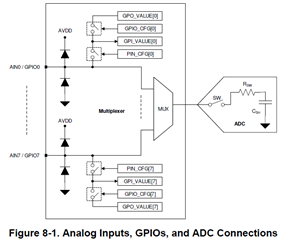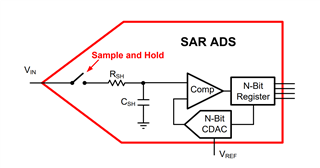Other Parts Discussed in Thread: ADS7038, TLA2528
Hello,
What is the input impedance of AINx pin?

I need to monitor the voltage using ADC and I'm adding 1kohm before the ADC pin to limit current.
Can i know input impedance of ADC input pin so that I will get a clarity on how much voltage is dropped across 1kohm.
Also, can i know AINx pin capacitance, MUX resistor and MUX capacitance value?
Can i also know what is the relation between AINx pin input impedance and RSW (and MUX resistor if known)?



